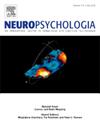Gait disorientation as a proxy for impaired spatial navigation: Associations between the Gait Disorientation Test and vestibular-mediated functions
IF 2
3区 心理学
Q3 BEHAVIORAL SCIENCES
引用次数: 0
Abstract
Introduction
Dizziness and imbalance from vestibular dysfunction may lead to gait disorientation and impaired construction of mental maps needed for spatial navigation. The Gait Disorientation Test (GDT), consisting of two components, walking eyes open (WEO) and walking eyes closed (WEC), can identify gait disorientation. We aimed to examine associations between the GDT and measures that reflect aspects of spatial navigation.
Methods
40 adults (20 with vestibular hypofunction, 20 controls) recruited from the community completed the GDT, Sensory Organization Test (SOT), Activities-specific Balance Confidence Scale, Dizziness Handicap Inventory, dynamic visual acuity testing, and the 5-Times-Sit-to-Stand Test. The composite score (COMP) and sensory analysis scores for somatosensory (SOM), vision (VIS), vestibular (VEST), and vision preference (PREF) were calculated for the SOT.
Results
The GDT was associated with the COMP (p < 0.001), VIS (p < 0.001), VEST (p = 0.001), and PREF (p = 0.021) but not the SOM (p = 0.223) scores. WEO was associated with VIS (−0.35 [-0.59, −0.04], p = 0.028), VEST (−0.32 [-0.57, −0.01], p = 0.046), and the COMP score (−0.44 [-0.66, −0.14], p = 0.005). WEC was associated with VIS (−0.73 [-0.85, −0.55], p < 0.001), VEST (−0.52 [-0.71, −0.24], p = 0.001), PREF (−0.37 [-0.61, −0.07], p = 0.018), and the COMP score (−0.75 [-0.86, −0.57], p < 0.001).
Discussion
Greater gait disorientation on the GDT is moderately to strongly associated with balance in challenging sensory conditions. Stronger associations with WEC likely reflect the importance of the vestibular system for spatial navigation. Performance on the GDT might be viewed as a proxy for spatial navigation ability.
步态失向作为空间导航障碍的代理:步态失向测试与前庭调节功能之间的关联。
前庭功能障碍引起的头晕和不平衡可能导致步态定向障碍和空间导航所需的心理地图构建受损。步态失向测试(GDT)是一种识别步态失向的测试方法,由睁眼行走和闭眼行走两部分组成。我们的目的是研究GDT和反映空间导航方面的措施之间的联系。方法:从社区招募40名成人(前庭功能减退20名,对照组20名),完成GDT、感觉组织测试(SOT)、特定活动平衡信心量表、头晕障碍量表、动态视力测试和5次坐立测试。计算SOT的视觉(VIS)、前庭(VEST)、体感(SOM)和视觉偏好(PREF)的综合评分(COMP)和感觉分析评分。结果:GDT与COMP相关(讨论:GDT上更大的步态定向障碍与挑战性感觉条件下的平衡有中度到强烈的关联。较强的WEC关联可能反映了前庭系统对空间导航的重要性。GDT的表现可以看作是空间导航能力的代表。
本文章由计算机程序翻译,如有差异,请以英文原文为准。
求助全文
约1分钟内获得全文
求助全文
来源期刊

Neuropsychologia
医学-行为科学
CiteScore
5.10
自引率
3.80%
发文量
228
审稿时长
4 months
期刊介绍:
Neuropsychologia is an international interdisciplinary journal devoted to experimental and theoretical contributions that advance understanding of human cognition and behavior from a neuroscience perspective. The journal will consider for publication studies that link brain function with cognitive processes, including attention and awareness, action and motor control, executive functions and cognitive control, memory, language, and emotion and social cognition.
 求助内容:
求助内容: 应助结果提醒方式:
应助结果提醒方式:


